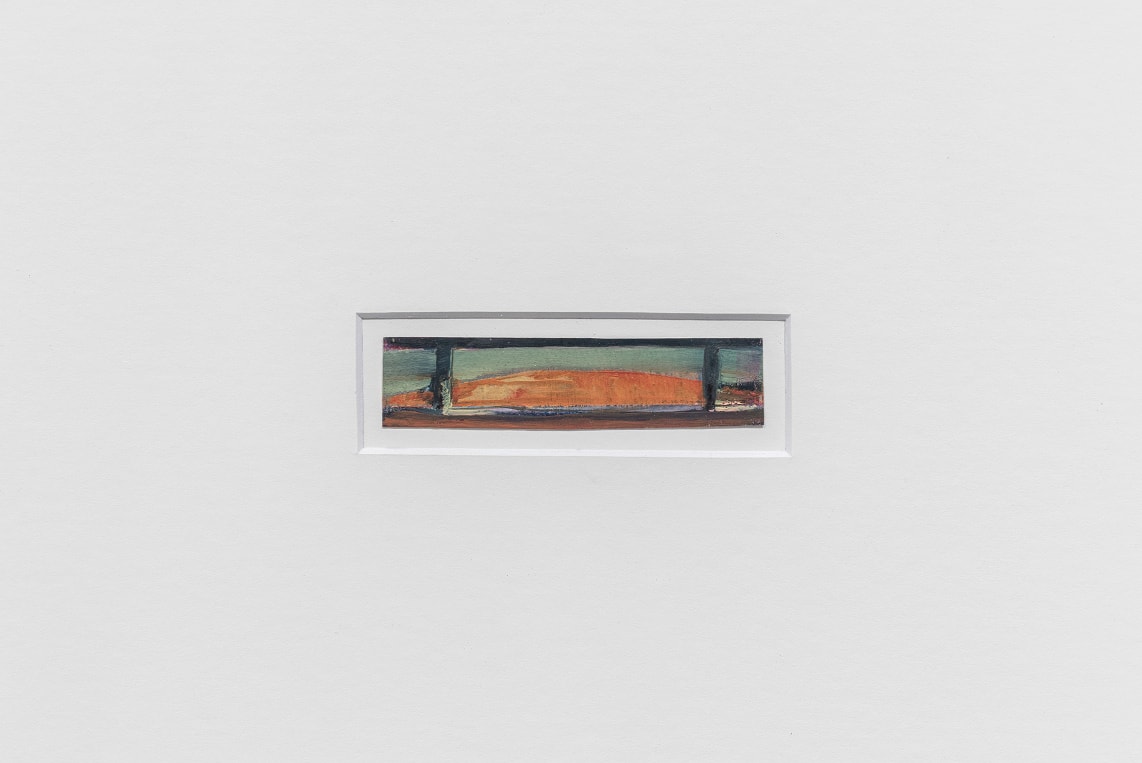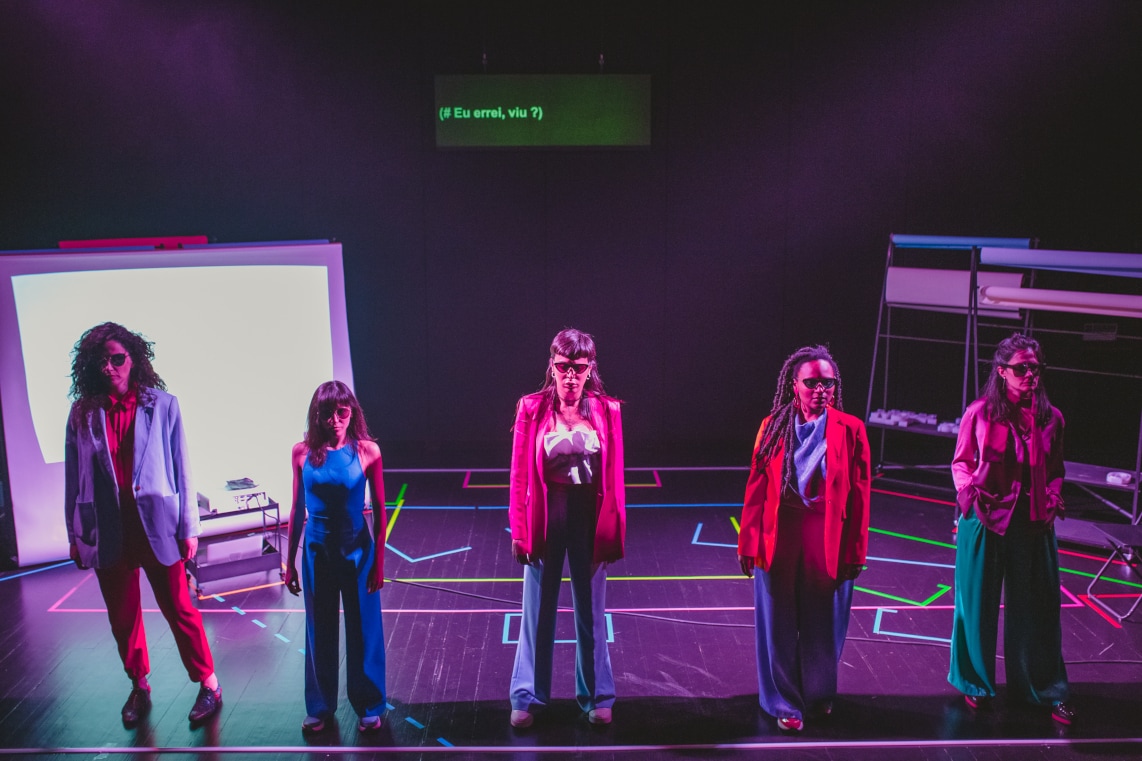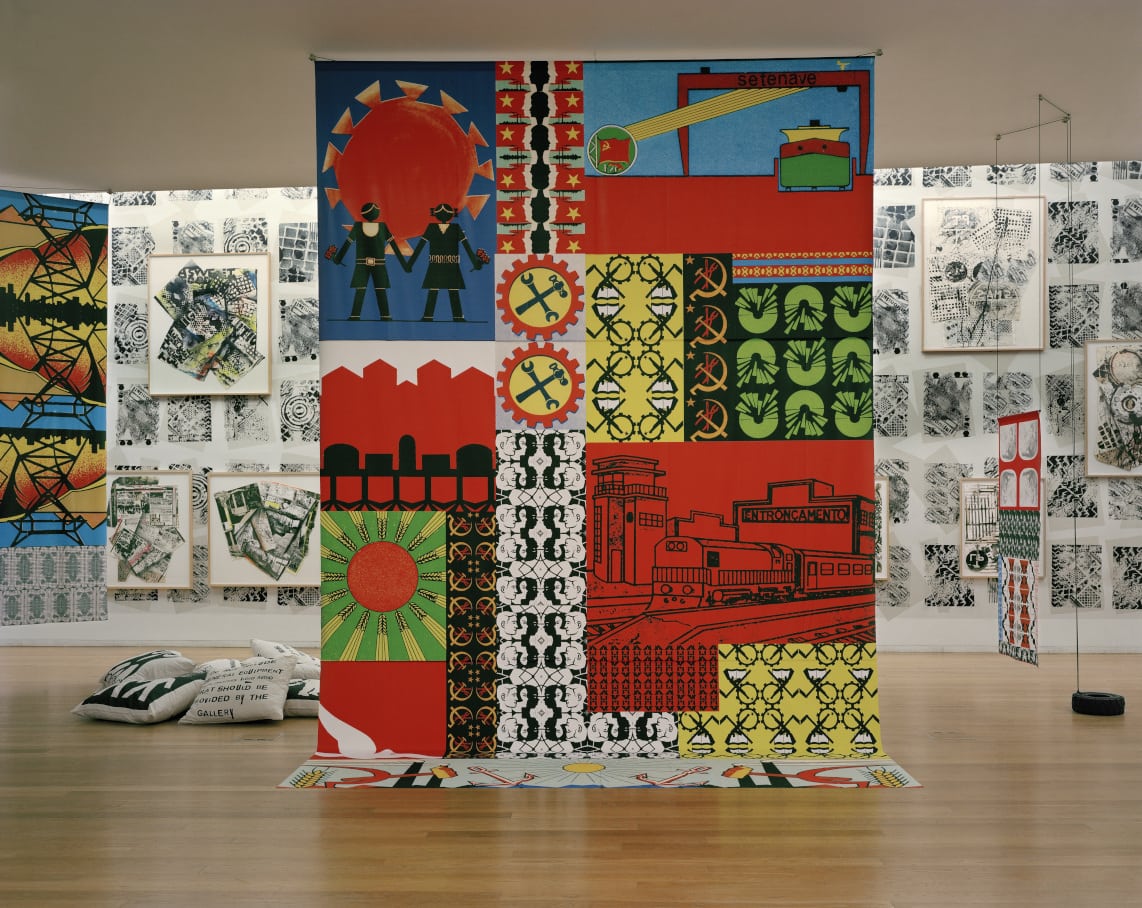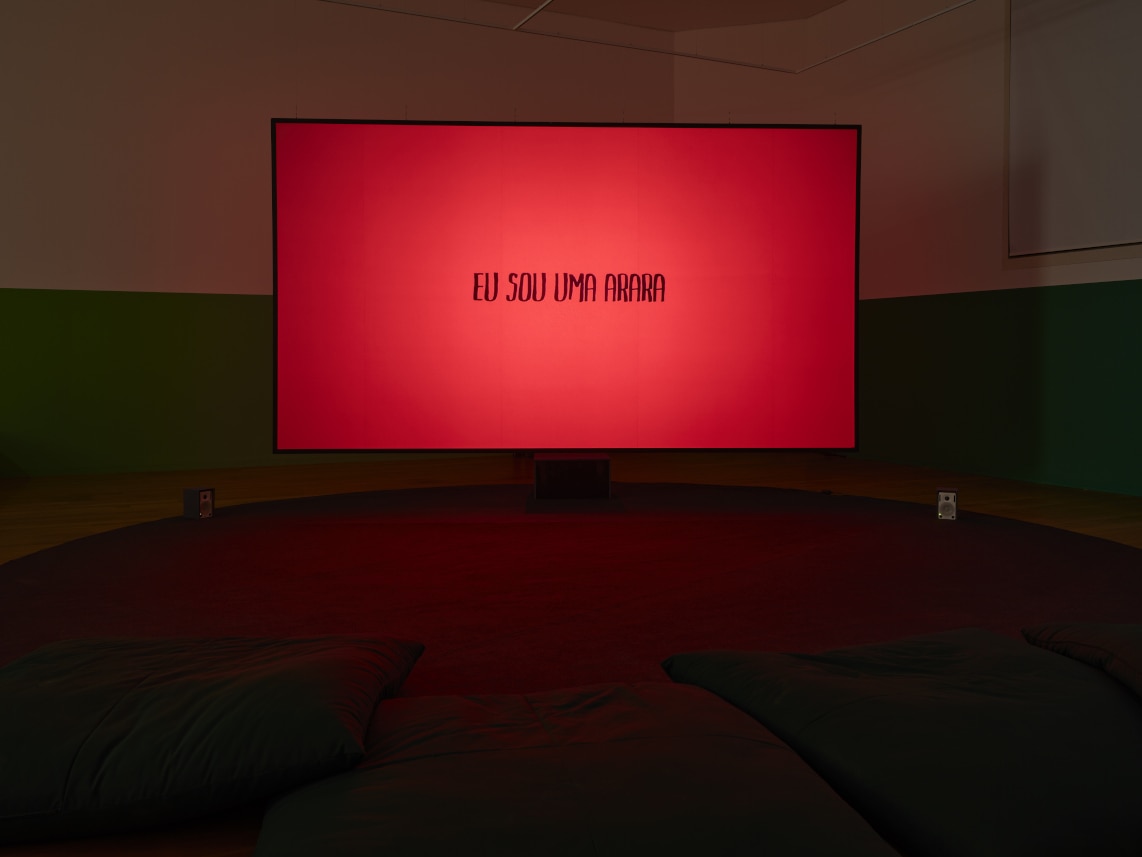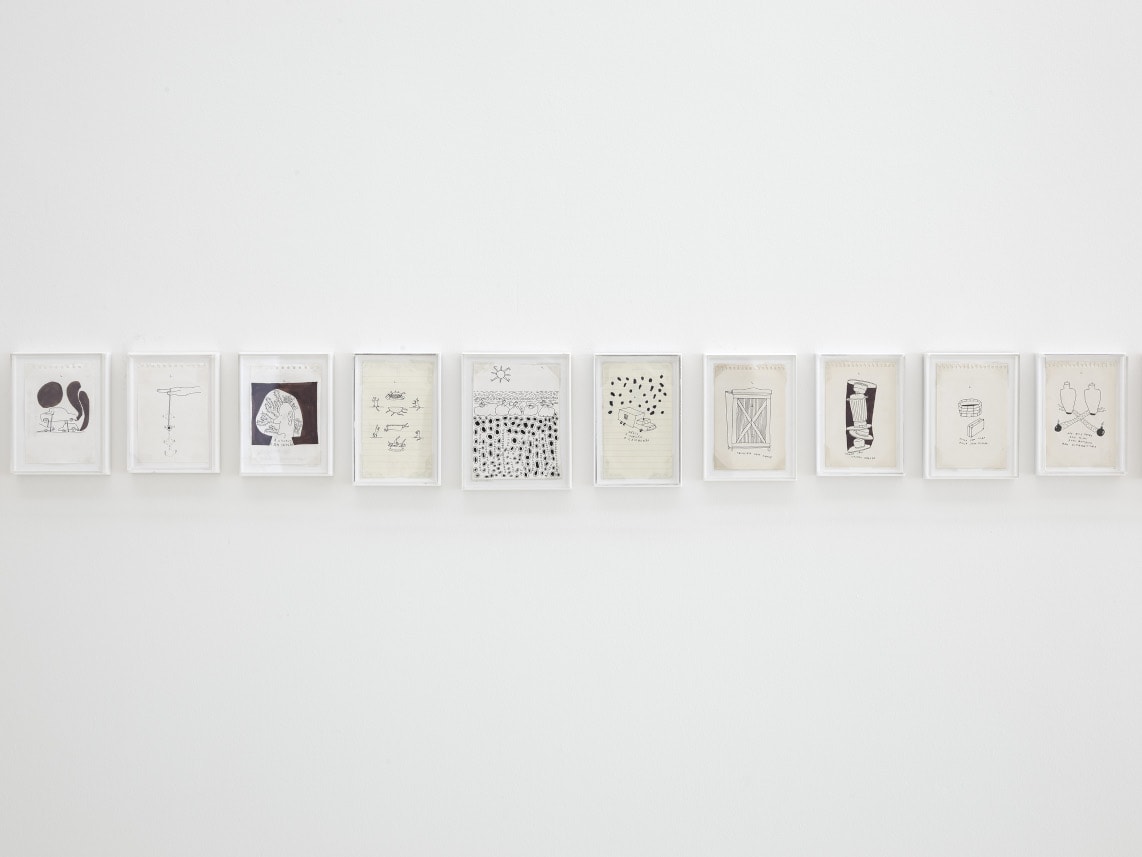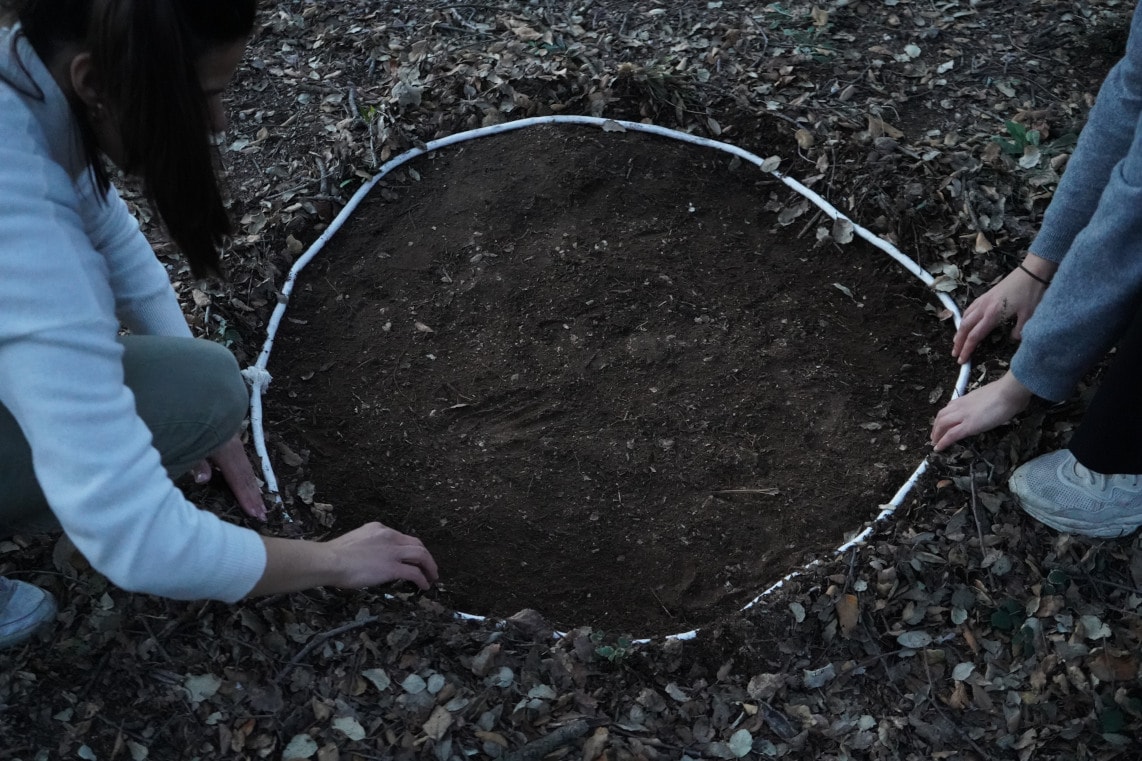“There is no such thing as friendship at first sight, rather a gradual occurrence, a slow process through time. We were friends and hadn’t realized.”
(Maurice Blanchot, 2000)
Paralaxe is the name of the collective of Luísa Abreu, Carolina Grilo Santos and Diana Geiroto Gonçalves. They have developed numerous projects, almost always crossing art research and scientific research, in editorial, virtual, exhibition and curatorial formats. In an interview published last year by Arte Capital, Luísa Abreu says that the origin of the Paralaxe collective results from “circumstances associated with friendship”, “we came together in a natural way”.
Friendship is a biopolitical concept, aggregating the paradoxes of contemporary social systems. Friendship, in the sense of sharing, of the construction of a common identity and mediation, can help us to imagine a new experience of freedom and equality. Studies on Aristotle’s passage ô phíloi, oudeís philos, “O friends, there are no friends!”[1], An odd sentiment. At once affirmation and denial. Some speculate on a less enigmatic meaning of this quote. Something like, “He who has (many) friends, has none”. For Derrida, friendship is one of the examples that the concepts that seem most natural to us are fraught with contradictions. “The possibility, the meaning and the phenomenon of friendship would never appear unless the figure of the enemy had already called them up in advance, had indeed put to them the question or the objection of the friend, a wounding question, a question of wound”[2], Derrida writes. “No friend without the possibility of wound”. As in all prolific binarisms, one half contains the seed of the other and the capacity for self-destruction.
Blanchot presents a more encouraging perspective, which I hope is enough to justify the fact that I started this article with such a vague theme, one that seems to evade analytic treatment, “We must give up trying to know those to whom we are linked by something essential; by this I mean we must greet them in the relation with the unknown in which they greet us as well, in our estrangement”[3]. We might say that, in Blanchot’s estrangement, lies the origin of the Paralaxe project, not only in the gap between self and friend, which brings the three artists together through difference, but in the seemingly infinite distance between art and science, from which what separates them becomes rapport.
It may be wise to clarify the meaning of Parallax. To quickly understand this phenomenon, the reader should stretch out their arm and raise their index finger, to see the background behind it. Then, without moving their finger, close the eye that was open and open the other. The reader will notice that the finger seems to move in relation to the background.
“The term parallax comes from the Greek word parállaxis, which means change. Often used in the scientific context, it is the apparent difference in the location of an object from different points of observation. A word that shows the failure of the accuracy of self-centred and watertight perception. Therefore, it is defined as a metric through triangulation, intersection and analysis of the same thing from different viewpoints.”
(Paralaxe, 2022)
Once again, the unpredictable sabotages the stability of the concepts that (dis)guide thought, making the practice of the collective akin to Walter Benjamin’s constellating thought in “Origin of German Tragic Drama” (1928): “Ideas relate to things as constellations relate to stars”, “ideas are eternal constellations”. We could use other metaphors, the rhizome or the archipelago, but the stars are at the root of Paralaxe, not only because they are dubbed from a method of measuring the distance between stars, but because of their proximity to the theme of their latest project.
Sobre o céu não sabemos nada, originates from an artistic residence with 23 creators to develop a work starting from Observatório Astronómico Manuel de Barros, Gaia. The results of this edition will be exhibited in the same location and can be visited until July 9. From what we have seen, the works may be visited from the reading of a map, and the spectator may choose one of the infinite entrances of this device, building their path.
(…) the map does not reproduce an unconscious closed in on itself, but constructs (…). The map is open, connectable in all its dimensions, dismountable, reversible, it can be constantly modified. It can be torn, inverted, adapt itself to assemblies of a different nature, be drawn by an individual, a collective, a social formation (…).
(Deleuze e Guattari, 1995)
A year after Whether the Weather (a project by the collective that opened the doors of the UP Geophysical Institute), we walked through an unusual garden, where we realized how easy it is to fit art into any context. Among a Great Telescope, a Meridian Circle of Mirrors and an Equatorial Tower, Beatriz Sarmento measures space with her body; Bruno Silva tests the limits between organic and synthetic; Carlos Mensil presents illusionist games; Ece Canil shows a cosmic sound experience; h0b0 articulates projections and holograms; Joana Ribeiro proposes a journey through space; and Juliana Ribeiro builds a grid tailored to the world, recalling the short story “On Rigor In Science” by Jorge Luís Borges. Coletivo Paralaxe is also exhibiting a video that makes us reflect on activity between the arts and the curatorial artistic practice, a growing phenomenon that reflects on the figure of the artist as an autonomous creator who breaks free from the closed relationship with the material and from their private encounters with the world (as the artistic tradition says). But it is perhaps also a result of the new work contexts and power relations that today dominate the Contemporary Art system. This residency also produces several artist journals, in which Beatriz Brum, Carolina Grilo Santos, Diana Geiroto, Didático Obscuro (Luísa Abreu and Maria Bernardino), Irina Pereira, Luís Cepa and Rúben Fernandes participate.
Finally, I highlight the web platform[4], a network of information and a map of interactions, that follows the project in its constellation dynamics, presenting satellite collaborations with Cinthia Mendonça, Coletivo SEM-FIM, João Pedro Trindade, José Taborda and yy.gemini.yy. And without forgetting the exhibition at Galeria do Sol, which opened last Friday, curated by Dose (Maria Miguel von Hafe, Mariana Rebola, Margarida Oliveira). It starts from this project to create an Atlas of images and objects, reminiscent of Aby Warburg’s visual compositions on tables. With small traces new affinities and constellations are built.
[1] Agamben, Giorgio. (2007, February, 19). Prix Européen de l’Essai Charles Veillon 2006 [conferência], Lousanne.
[2] Derrida, J. (2020). Politics of Friendship. London: Verso
[3] Blanchot, M. (1997). Friendship. USA: Stanford University Press
[4] https://www.paralaxe.space/
